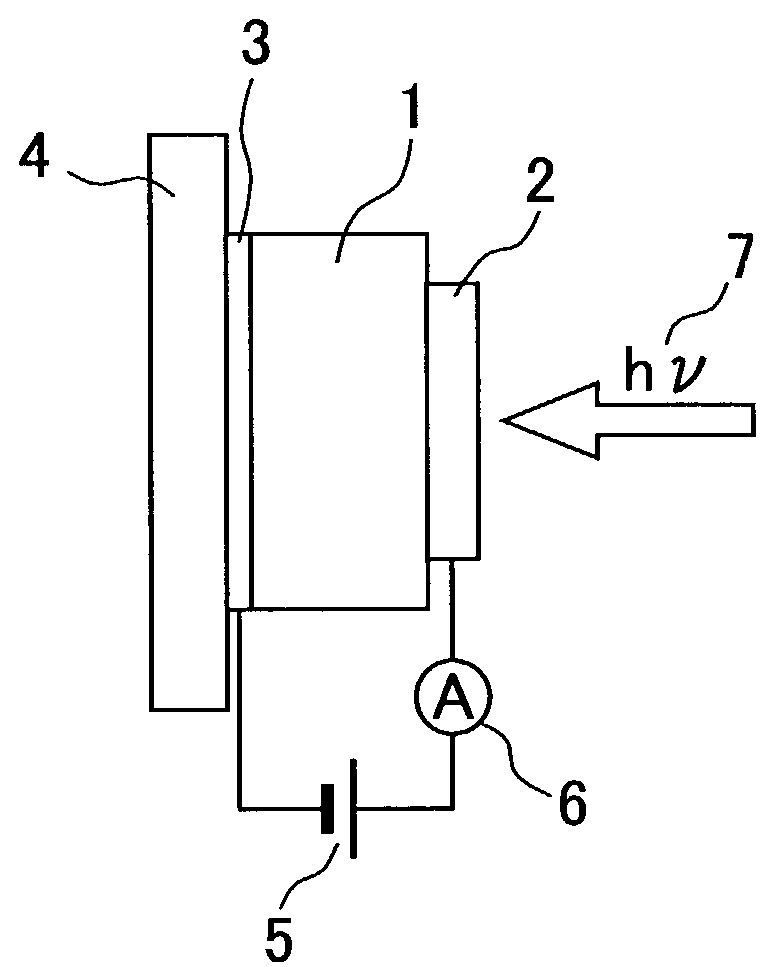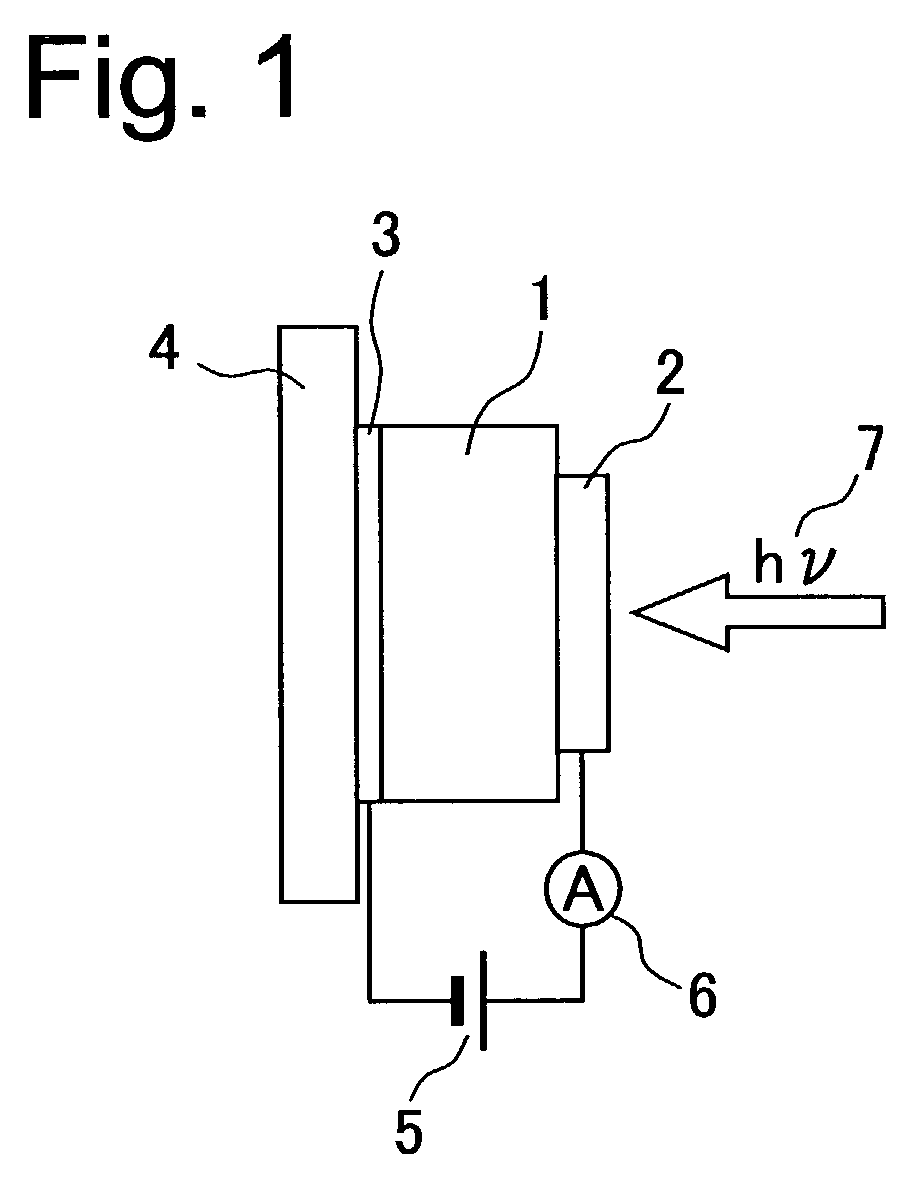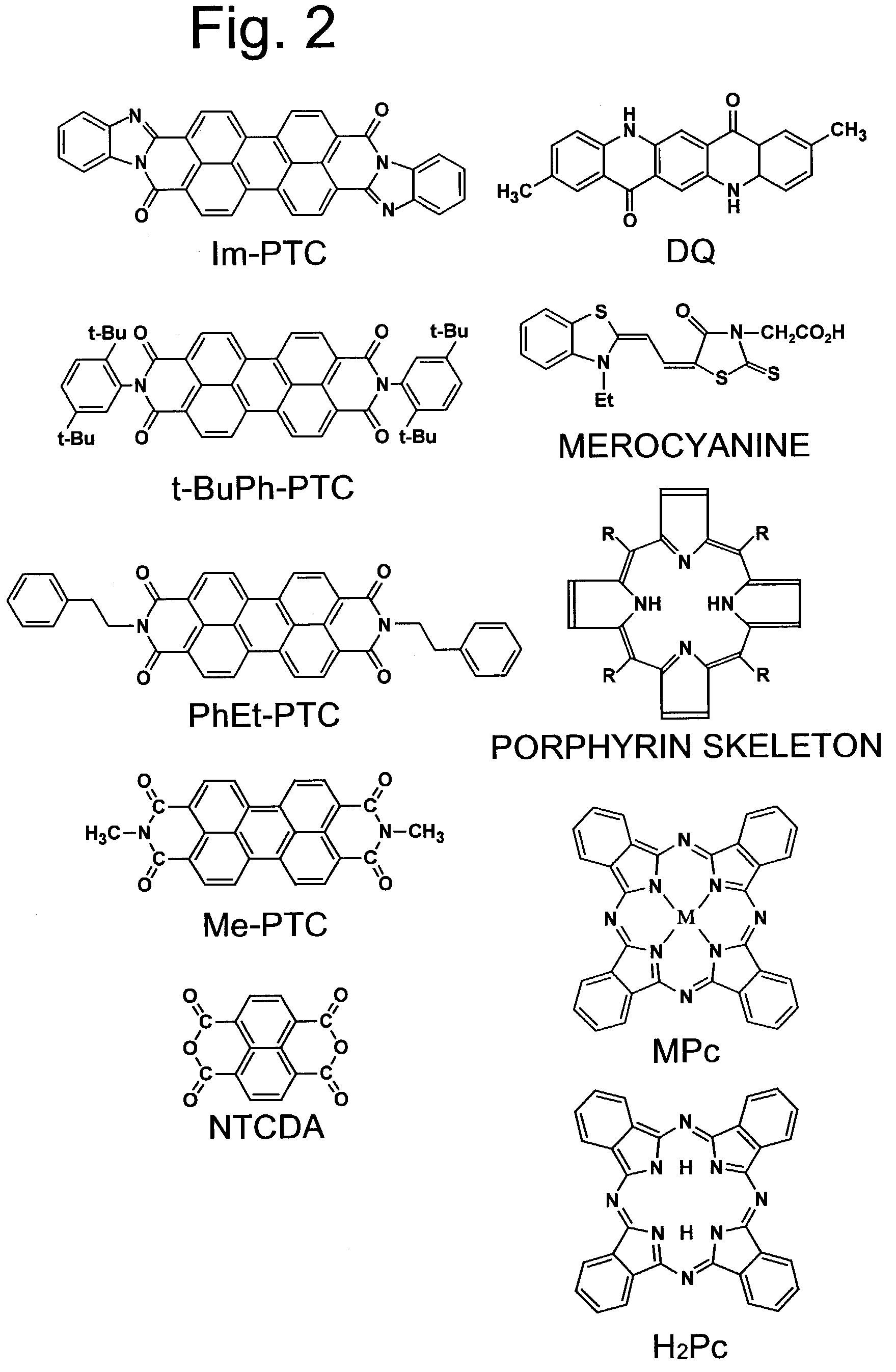Method for detecting gas with the use of photocurrent amplification and the like and gas sensor
a technology of photocurrent amplification and gas sensor, which is applied in the direction of individual semiconductor device testing, semiconductor/solid-state device testing/measurement, instruments, etc., can solve the problems of difficult to achieve accurate measurement and drawback of slow response, so as to improve response speed and sensitivity.
- Summary
- Abstract
- Description
- Claims
- Application Information
AI Technical Summary
Benefits of technology
Problems solved by technology
Method used
Image
Examples
first embodiment
[0045]The first embodiment will be described by way of an example where a p-type organic semiconductor is used.
[0046]FIG. 1 is a schematic configuration view of a gas sensor device in which a section view of a sandwich cell structure of a photocurrent multiplication gas sensor device according to the first embodiment is shown together with an electric circuit. The reference numeral 1 denotes an organic semiconductor thin film which is a copper phthalocyanine (CuPc: the center metal M is Cu in the chemical formula represented as MPc in FIG. 2) evaporated film having a film thickness of about 1,000 nm. The reference numeral 2 denotes a metallic electrode thin film which is formed on one surface of the organic semiconductor film 1 so as to closely contact with the same, which is an In (indium) evaporated film having a film thickness of about 100 nm. The reference numeral 3 denotes another metallic electrode thin film which is an Au (gold) evaporated film having a film thickness of abou...
second embodiment
[0064]As the second embodiment, FIG. 8 shows an example wherein an n-type organic semiconductor is used. As an organic semiconductor thin film 1a, a perylene pigment (Me-PTC: represented by the chemical formula in FIG. 2) evaporated film having a film thickness of about 500 nm or a naphthalene derivative (NTCDA: represented by the chemical formula in FIG. 2) evaporated film having a film thickness of about 500 nm, which exhibits n-type semiconductor property, is used. As a metallic electrode 2a on the side where a gas to be sensed comes into contact and light is irradiated, an Au evaporated film having a film thickness of about 20 nm is used, and as the other metallic electrode 3a, an ITO (indium tin oxide) evaporated film having a film thickness of about 60 nm is used.
[0065]In the case of the n-type semiconductor, the photocurrent multiplication phenomenon occurs at the interface between the electrode to which the voltage is negatively applied and the organic semiconductor (as will...
PUM
| Property | Measurement | Unit |
|---|---|---|
| thickness | aaaaa | aaaaa |
| thickness | aaaaa | aaaaa |
| thickness | aaaaa | aaaaa |
Abstract
Description
Claims
Application Information
 Login to View More
Login to View More - R&D
- Intellectual Property
- Life Sciences
- Materials
- Tech Scout
- Unparalleled Data Quality
- Higher Quality Content
- 60% Fewer Hallucinations
Browse by: Latest US Patents, China's latest patents, Technical Efficacy Thesaurus, Application Domain, Technology Topic, Popular Technical Reports.
© 2025 PatSnap. All rights reserved.Legal|Privacy policy|Modern Slavery Act Transparency Statement|Sitemap|About US| Contact US: help@patsnap.com



